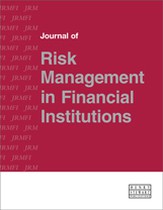A strategy road map for small and medium-sized banks from a Canadian perspective: Transformation from start-up to mid-size and beyond
Abstract
One item on the regulatory agenda is the need to increase competition in the financial system. Financial technology is replacing bricks-and-mortar distribution channels, reducing the need for economies of scale that has been a barrier to entry and growth. Financial services are being unbundled and the large banks, being financial conglomerates, face losing their grip on the market, as space is opened up for the lower-cost specialised providers of financial services that offer superior customer service. This is an opportunity not only for neobanks but also for smaller traditional banks that can update their skills and adapt. In Canada, small and medium-size traditional banks are trying to seize the opportunity. They continue to deploy a lending-based business model while taking advantage of FinTech for operational efficiency and digital distribution channels. They are also working towards AIRB licences in order to become capital efficient and increase their addressable market. Nevertheless, they face formidable challenges including their intolerance to loss, more expensive funding, more expensive and higher capital requirements, and the big banks’ market power. This paper discusses the risk strategies these banks can employ in their journey from start-ups to mid-sized and beyond. We provide numerical examples using the ROE framework.
The full article is available to subscribers to the journal.
Author's Biography
Bogie Ozdemir is a Vice President in Sun Life Financial Group. He is responsible for economic capital and is building out its capabilities for Solvency II/Own Risk and Solvency Assessment (ORSA) and model validation. Bogie was a Vice President in the BMO Financial Group responsible for economic capital, stress testing and Basel analytics, and jointly responsible for the Internal Capital Adequacy Assessment Process (ICAAP). Previously he was a Vice President in S&P’s Risk Solutions, globally responsible for engineering and implementing new solutions and business development. He has co-authored various papers and a book on Basel II implementation.
Citation
Ozdemir, Bogie (2022, June 1). A strategy road map for small and medium-sized banks from a Canadian perspective: Transformation from start-up to mid-size and beyond. In the Journal of Risk Management in Financial Institutions, Volume 15, Issue 3. https://doi.org/10.69554/FBEB6186.Publications LLP
